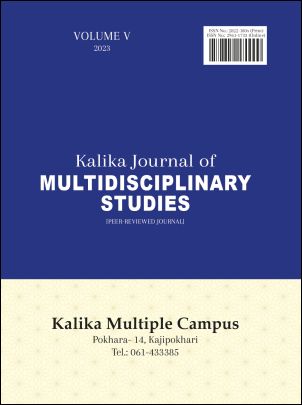Cultural Assimilation: A Post Colonial Perspective in Kim
DOI:
https://doi.org/10.3126/kjms.v5i1.60916Keywords:
Ambivalence, assimilation, hegemony, hybridity, mimicry, orientalAbstract
Rudyard Kipling’s Kim is mostly considered as a novel of advocacy for making colonizers stronger to rule the natives. It deals the native with a stereotypical perception of the oriental, particularly, of Indian people. This paper has used Edward Said’s postcolonial perspective of orientalism to analyze Kim. Emphasis is given on identifying the situations and expressions that are directed to cultural assimilation, trying to indicate that Kipling advocates for the English cultural supremacy and colonial significance in Indian territory. This research is based on primary as well as secondary data analysis with qualitative research approach. Finding shows that Kipling, with a pretext of standing in- between the East and the West, visualizes varying ranges of stereotype of India and its peoples. Even if cultural assimilation seems to be liberally responded at different occasions this study tells that English community is in understanding and application of cultural supremacy as a determinate factor to establish their rule upon the native and inspire the latter to assimilate to former’s culture. Detailed analysis of assimilation through post-colonial cultural hegemony perceptive would be further relevant study on this novel.
Downloads
Downloads
Published
How to Cite
Issue
Section
License
All rights reserved. No part of this journal may be produced in any form or by any electronic or mechanical means, including infromation storage and retrieval system, without permission in writting from the publisher, except by a reviewer who may quote brief passage in review.




